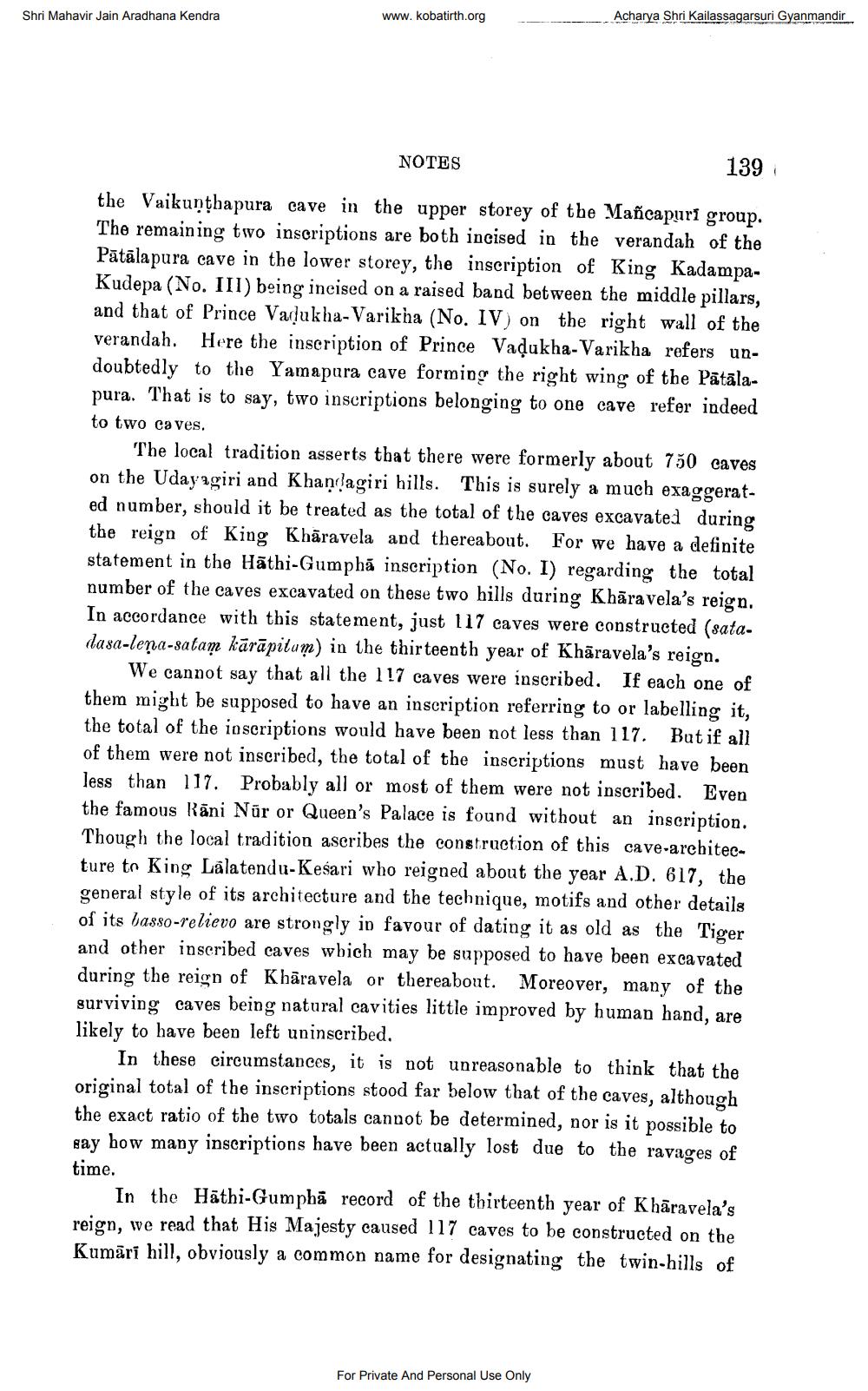________________
Shri Mahavir Jain Aradhana Kendra
Acharya Shri Kailassagarsuri Gyanmandir
www.kobatirth.org
NOTES
139
the Vaikunthapura cave in the upper storey of the Mañcapuri group. The remaining two inscriptions are both incised in the verandah of the Pātālapura cave in the lower storey, the inscription of King KadampaKudepa (No. III) being incised on a raised band between the middle pillars, and that of Prince Vadukha-Varikha (No. IV) on the right wall of the verandah. Here the inscription of Prince Vadukha-Varikha refers undoubtedly to the Yamapura cave forming the right wing of the Pātālapura. That is to say, two inscriptions belonging to one cave refer indeed to two caves.
The local tradition asserts that there were formerly about 750 caves on the Udayagiri and Khand'agiri hills. This is surely a much exaggerated number, should it be treated as the total of the caves excavated during the reign of King Khāravela and thereabout. For we have a definite statement in the Hāthi-Gumphā inscription (No. 1) regarding the total number of the caves excavated on these two hills during Khāra vela's reign. In accordance with this statement, just 117 caves were constructed (sata. dasa-lena-satam kārā pitum) in the thirteenth year of Khāravela's reign.
We cannot say that all the 1!7 caves were inscribed. If each one of them might be supposed to have an inscription referring to or labelling it, the total of the inscriptions would have been not less than 117. But if all of them were not inscribed, the total of the inscriptions must have been less than 117. Probably all or most of them were not inscribed. Even the famous Rāni Nūr or Queen's Palace is found without an inscription. Though the local tradition ascribes the construction of this cave-architecture to King Lalatendu-Kesari who reigned about the year A.D. 617, the general style of its architecture and the technique, motifs and other details of its basso-relievo are strongly in favour of dating it as old as the Tiger and other inscribed caves wbich may be supposed to have been excavated during the reign of Khāravela or thereabout. Moreover, many of the gurviving caves being natural cavities little improved by human hand, are likely to have been left uninscribed.
In these circumstances, it is not unreasonable to think that the original total of the inscriptions stood far below that of the caves, although the exact ratio of the two totals cannot be determined, nor is it possible to say how many inscriptions have been actually lost due to the ravages of time.
In the Hāthi-Gumphä record of the thirteenth year of Khāravela's reign, we read that His Majesty caused 117 caves to be constructed on the Kumāri hill, obviously a common name for designating the twin-hills of
For Private And Personal Use Only




